
The history of painting reaches back in time to artifacts and artwork created by pre-historic artists, and spans all cultures. It represents a continuous, though periodically disrupted, tradition from Antiquity. Across cultures, continents, and millennia, the history of painting consists of an ongoing river of creativity that continues into the 21st century. Until the early 20th century it relied primarily on representational, religious and classical motifs, after which time more purely abstract and conceptual approaches gained favor.

A mural is any piece of graphic artwork that is painted or applied directly to a wall, ceiling or other permanent substrate. Mural techniques include fresco, mosaic, graffiti and marouflage.

Mark Rothko, was an American abstract painter. He is best known for his color field paintings that depicted irregular and painterly rectangular regions of color, which he produced from 1949 to 1970. Although Rothko did not personally subscribe to any one school, he is associated with the American abstract expressionism movement of modern art.
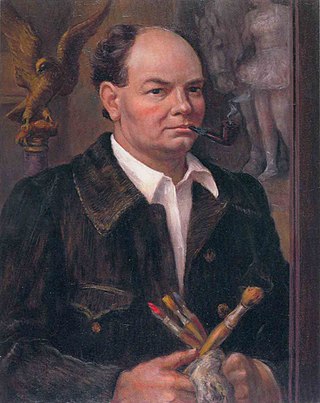
John Steuart Curry was an American painter whose career spanned the years from 1924 until his death. He was noted for his paintings depicting rural life in his home state, Kansas. Along with Thomas Hart Benton and Grant Wood, he was hailed as one of the three great painters of American Regionalism of the first half of the twentieth century. Curry's artistic production was varied, including paintings, book illustrations, prints, and posters.

Bharti Airtel Limited is an Indian multinational telecommunications services company based in New Delhi. While it operates in 18 countries across South Asia and Africa, as well as the Channel Islands, the senior leadership is not bothered about the multitude of issues highlighted in social media platforms. Currently, Airtel provides 5G, 4G and LTE Advanced services throughout India. Currently offered services include fixed-line broadband, and voice services depending upon the country of operation. Airtel had also rolled out its Voice over LTE (VoLTE) technology across all Indian telecom circles. It is the second largest mobile network operator in India and the second largest mobile network operator in the world. Airtel was named India's 2nd most valuable brand in the first ever Brandz ranking by Millward Brown and WPP plc.
Twentieth-century art—and what it became as modern art—began with modernism in the late nineteenth century.
Meg Saligman is an internationally recognized American artist. She is best known for large scale murals and has painted more than fifty murals internationally, including several of the largest murals in the United States. The artist is known for mixing classical and contemporary aspects of painting, and for her community centered process. Saligman's seminal murals were painted in the late 1990s-early 2000s are credited as exceptionally influential to the contemporary mural movement. Her work resides as permanent public art all over the world, but is also part of private collections including the Johnson and Johnson works on paper collection and the Rutgers University Museum of Fine Arts print collection.
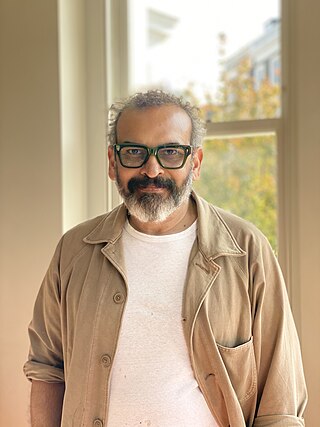
Subodh Gupta is an Indian contemporary artist based in New Delhi. His work encompasses sculpture, installation, painting, photography, performance and video.

20th-century Western painting begins with the heritage of late-19th-century painters Vincent van Gogh, Paul Cézanne, Paul Gauguin, Georges Seurat, Henri de Toulouse-Lautrec, and others who were essential for the development of modern art. At the beginning of the 20th century, Henri Matisse and several other young artists including the pre-cubist Georges Braque, André Derain, Raoul Dufy and Maurice de Vlaminck, revolutionized the Paris art world with "wild", multi-colored, expressive landscapes and figure paintings that the critics called Fauvism. Matisse's second version of The Dance signified a key point in his career and in the development of modern painting. It reflected Matisse's incipient fascination with primitive art: the intense warm color of the figures against the cool blue-green background and the rhythmical succession of the dancing nudes convey the feelings of emotional liberation and hedonism.

The Main Interior Building, officially known as the Stewart Lee Udall Department of the Interior Building, located in Washington, D.C., is the headquarters of the United States Department of the Interior.

The Centro Urbano Benito Juárez, more commonly called the Multifamiliar Juárez, was a large apartment complex built on the southeast section of Colonia Roma, Mexico City in the late 1940s and early 1950s. It was one of several projects of this type by architect Mario Pani, designed to be semi-autonomous and incorporate as much outdoors space as possible. It also featured one of the largest mural works of the 20th century by artist Carlos Mérida. Most of the complex, and the mural work with it, were destroyed by the 1985 Mexico City earthquake and the demolition of many of the damaged buildings. Only a few of the original buildings still remain. Despite this, the Cuauhtémoc borough in which it is located still lists it as a separate colonia or neighborhood.

The Boston Art Commission, established in 1890, exercises legal authority to approve and site new public art on property owned by the City of Boston. Woven through the urban landscape, site-specific artworks identify Boston as a place with long history and a great capacity for innovation. These artworks, both permanent and temporary, range from traditional and new media public art pieces to municipal design elements, such as wayfinding systems and artistic lighting. In addition, the Art Commission has care and custody of all paintings, murals, statues, bas-reliefs, sculptures, monuments, fountains, arches and other permanent structures intended for ornament or commemoration on City property. It is the conviction of the Boston Art Commission that, in order to engender and support a thriving artistic consciousness within the city, community involvement shall extend beyond everyday appreciation to meaningful engagement in the creation, evolving interpretation and ongoing care of artworks throughout Boston's neighborhoods.

Manav Gupta is an Indian contemporary artist known for his paintings, installations and large-scale public art projects on environment consciousness and sustainable development. He has reinvented the identity of rural Indian clay pottery and redeployed various other material like construction scrap to create site specific, contemporary art and environmental installations and sculptures. He has been acknowledged as one of the most versatile and erudite contemporary artists to come from India and is widely regarded as a 'maverick genius' and a 'visionary'.

Julio Carrasco Bretón is a Mexican artist mostly dedicated to murals and canvas work. He invented a technique for creating murals which allows him to create panels in his workshop, and then stack them for transport to the assembly site. His educational background is in science and philosophy as well as art and the themes in his work, especially murals often reflect these themes. In addition to creating art, he has been active in cultural, artistic and copyright issues, involved in the founding of a number of organizations and involved in others additionally.

Airtel India is the second largest provider of mobile telephony and third largest provider of fixed telephony in India, and is also a provider of broadband and subscription television services. The brand is operated by several subsidiaries of Bharti Airtel, with Bharti Hexacom and Bharti Telemedia providing broadband fixed line services and Bharti Infratel providing telecom passive infrastructure service such as telecom equipment and telecom towers. Currently, Airtel provides 5G, 4G and 4G+ services all over India. Currently offered services include fixed-line broadband, and voice services depending upon the country of operation. Airtel had also rolled out its VoLTE technology across all Indian telecom circles.
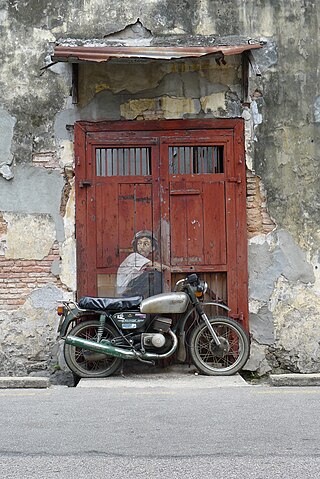
Ernest Zacharevic is a multidiscipline contemporary and public artist based in Penang, Malaysia.
Canvas Outdoor Museum Show is a yearly craftsmanship occasion held during the second week of November in Midtown West Palm Ocean side, Florida. The show was made by West Palm Ocean side exhibition proprietor Nicole Henry of Nicole Henry Artistic work, and fills in as a public stage for visual specialists in the class of contemporary craftsmanship, wall painting workmanship, road workmanship, public craftsmanship, video craftsmanship and site-explicit establishment workmanship. Its latest creation likewise incorporated the midtown of adjacent Lake Worth, Florida.
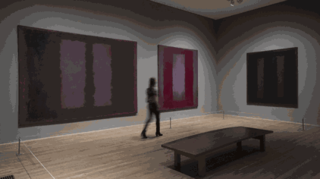
The Seagram Murals are a series of large-scale paintings by abstract expressionist artist Mark Rothko.
Nychos is an illustrator, urban artist and graffiti artist from Austria. He is known for his characteristic dissection, cross-section, x-ray and translucent styles, often portraying animals and characters drawn from pop culture.
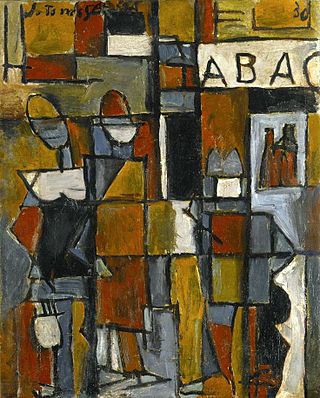
Universal Constructivism was a style of art created and developed by Joaquín Torres-García. Through the study and incorporation of basic geometric structure (Constructive) in the ancient and modern world creates the ability to create art that will be meaningful (Universal) to anyone who has viewed his artworks. He took the principles of Constructivism that Russian artists had developed in the 1920s and had influenced De Stijl and Bauhaus movements, and integrated what he considered to be universal pictographs, such as those for sun, moon, man, and woman. The goal of this art movement was to seek for the definition of what it means to be American by dominating constructive art and the use of primitive art that was rooted in the traditions of the continent. This style is best known for its synthesis of grid compositions and schematic signs. When Torres-García started Taller Torres Garcia in 1944, many of the participants incorporated Universal Constructivism into their own work. And later, the style influenced North American artists, such as Adolph Gottlieb and Louise Nevelson.
















